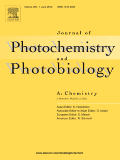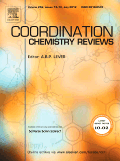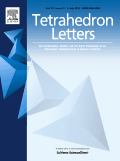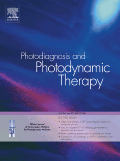
PHOTOCHEMICAL & PHOTOBIOLOGICAL SCIENCES
Scope & Guideline
Exploring the Interplay of Light and Life
Introduction
Aims and Scopes
- Photodynamic Therapy (PDT) and Antimicrobial Applications:
Research on the use of light-activated compounds to treat diseases, particularly in cancer therapy and antimicrobial photodynamic therapy. This includes studies on photosensitizers and their mechanisms of action against various pathogens. - Photobiomodulation and Health Sciences:
Investigations into the therapeutic effects of light on biological tissues, including studies that explore the modulation of cellular responses through low-level laser therapy and its applications in regenerative medicine. - Environmental Photochemistry:
Studies focused on the effects of light on environmental pollutants, including research on photocatalysis for water purification and the degradation of organic contaminants using solar energy. - Light-Activated Sensors and Probes:
Development of innovative fluorescent probes and sensors that utilize light for the detection of various analytes, including ions, biomolecules, and environmental pollutants. - Photochemical Processes in Biological Systems:
Exploration of the role of light in biological processes, including photosynthesis, photomorphogenesis, and the effects of UV radiation on plant and animal systems. - Nanomaterials and Photocatalysis:
Research on the synthesis and application of nanomaterials in photocatalytic processes, emphasizing their role in enhancing light absorption and chemical reactivity for environmental and industrial applications.
Trending and Emerging
- Nanotechnology in Phototherapy:
Research utilizing nanomaterials in phototherapy, particularly in enhancing the efficacy of photosensitizers for cancer treatment and antimicrobial applications, is on the rise, reflecting advancements in nanotechnology. - Sustainable Photocatalysis:
An increasing focus on sustainable photocatalytic processes that utilize solar energy for environmental remediation and the degradation of pollutants, driven by the need for eco-friendly solutions. - Photobiomodulation in Regenerative Medicine:
Growing interest in the application of photobiomodulation therapy for enhancing tissue repair and regeneration, with studies exploring its mechanisms and efficacy in various medical conditions. - Advanced Fluorescent Probes and Sensors:
Emerging research on the development of highly sensitive and specific fluorescent probes for biological and environmental monitoring, emphasizing their application in real-time detection and analysis. - Impact of UV Radiation on Health:
Heightened research efforts addressing the effects of UV radiation on human health, particularly in relation to skin damage, aging, and the role of protective agents, reflecting public health concerns. - Interdisciplinary Approaches in Photochemistry:
An emerging trend towards integrating photochemistry with other scientific disciplines, such as biology, materials science, and environmental science, to address complex research challenges.
Declining or Waning
- Traditional Chemical Photoreactions:
There is a noticeable decrease in the coverage of conventional chemical photoreactions that do not incorporate modern techniques or materials, as research increasingly favors innovative methods and applications. - Basic Photochemical Mechanisms:
While foundational studies on photochemical mechanisms remain important, their prevalence has diminished as the field shifts towards applied research, particularly in therapeutic and environmental contexts. - Basic Biological Effects of Light:
Studies focusing solely on the basic biological effects of light without application to health or environmental issues are becoming less common, as researchers aim to link findings with practical applications. - In vitro Studies without Translational Aspects:
Research that presents in vitro studies without a clear pathway to clinical or environmental application is seeing reduced interest, as the emphasis shifts towards studies that demonstrate practical relevance.
Similar Journals

Journal of Optoelectronic and Biomedical Materials
Illuminating the Future of Optoelectronics in MedicineJournal of Optoelectronic and Biomedical Materials (ISSN: 2066-0049) is a peer-reviewed academic journal published by the renowned VIRTUAL INSTITUTE OF PHYSICS, dedicated to advancing research in the interdisciplinary fields of optoelectronics and biomedical materials. This journal aims to provide a platform for researchers, professionals, and students to disseminate their findings on innovative materials and technologies that harness optical and electronic properties for biomedical applications. With an increasing significance in medical diagnostics, therapeutic approaches, and advanced materials science, the Journal of Optoelectronic and Biomedical Materials underscores the importance of facilitating collaboration among scientists from diverse fields. While currently operating under a traditional access model, the journal aspires to enhance global accessibility to cutting-edge research contributions that will drive the future of technology in healthcare and biotechnology. As a growing reference point in its domain, it encourages submissions that can advance these crucial scientific areas.

International Journal of Nano Dimension
Advancing the frontiers of nanotechnology.The International Journal of Nano Dimension is a premier publication dedicated to advancing the field of nanotechnology and its applications across various disciplines, published by the Islamic Azad University, Tonekabon Branch. With an ISSN of 2008-8868 and an E-ISSN of 2228-5059, this journal serves as a vital platform for researchers, professionals, and students seeking to disseminate and access cutting-edge findings in nano materials and their integration into science and engineering. The journal has gained notable recognition in Scopus rankings, especially within the fields of Materials Science and Chemical Engineering, emphasizing its commitment to high-quality research. Spanning the years from 2019 to 2024, the journal emphasizes open access to foster knowledge sharing in the scientific community. As nanotechnology continues to revolutionize industries, the International Journal of Nano Dimension plays an essential role in showcasing transformative research that addresses the challenges and opportunities of this dynamic field.

Asian Journal of Organic Chemistry
Connecting scholars through groundbreaking organic chemistry insights.Asian Journal of Organic Chemistry, published by WILEY-V C H VERLAG GMBH, stands as a pivotal platform in the realm of organic chemistry, catering to researchers and professionals eager to share their contributions to the field. With an ISSN of 2193-5807 and E-ISSN of 2193-5815, this journal spans a commendable convergence from 2012 to 2024, featuring a notable impact factor highlighted by its Q2 ranking in the 2023 Organic Chemistry category. Positioned at rank #94 out of 211 in Scopus, the journal emphasizes the importance of quality research and innovation in organic chemistry. The lack of open access enhances the journal's selectivity, ensuring only the most rigorous and impactful studies are published. Serving as a vital resource for scholars, students, and practitioners alike, the Asian Journal of Organic Chemistry fosters the dissemination of knowledge, advances academic dialogue, and reinforces the pivotal role of organic chemistry in scientific advancement.

JOURNAL OF PHOTOCHEMISTRY AND PHOTOBIOLOGY A-CHEMISTRY
Connecting Photochemistry and Photobiology for a Brighter FutureJOURNAL OF PHOTOCHEMISTRY AND PHOTOBIOLOGY A-CHEMISTRY is a prestigious peer-reviewed journal published by Elsevier Science SA, focusing on the interdisciplinary fields of photochemistry and photobiology. Established in 1987 and set to span to 2025, the journal has earned a notable reputation, currently ranking in the Q2 quartile in Chemical Engineering, Chemistry, and Physics & Astronomy, as per the 2023 metrics. With an impressive Scopus ranking, including #34 in General Physics and Astronomy and #50 in General Chemical Engineering, it represents a significant platform for researchers aiming to contribute to advancements in these critical areas. While the journal operates under a subscription model, it remains accessible through various academic databases, ensuring that cutting-edge research reaches a global audience. Researchers, professionals, and students are encouraged to explore the latest studies and reviews that explore the interactions of light with chemical processes and biological systems, positioning the journal as essential reading for anyone in the field.

COORDINATION CHEMISTRY REVIEWS
Unveiling Insights in Coordination ChemistryCOORDINATION CHEMISTRY REVIEWS is a premier academic journal published by ELSEVIER SCIENCE SA, specializing in the interdisciplinary field of coordination chemistry. Established in 1966 and running until 2025, the journal boasts an impressive reputation, having achieved Q1 quartile rankings in categories such as Inorganic Chemistry, Materials Chemistry, and Physical and Theoretical Chemistry. It holds a remarkable position in Scopus rankings, being ranked #1 in both Physical and Theoretical Chemistry and Inorganic Chemistry, indicating its significance within the field. With a focus on comprehensive reviews that synthesize existing knowledge and propose future research directions, COORDINATION CHEMISTRY REVIEWS serves as an invaluable resource for researchers, professionals, and students eager to stay at the forefront of coordination chemistry advancements. Although not open access, the journal is accessible through various academic institutions and libraries, ensuring that cutting-edge research is available to those who seek it.

TETRAHEDRON LETTERS
Connecting Researchers with Cutting-Edge DiscoveriesTETRAHEDRON LETTERS, published by Pergamon-Elsevier Science Ltd, is a leading journal in the fields of Biochemistry, Drug Discovery, and Organic Chemistry, with a rich legacy since its inception in 1959. This prestigious journal serves as a vital resource for researchers and professionals dedicated to advancing the understanding of chemical sciences, featuring high-impact research that influences both academic and practical applications. Although it is currently classified in the third quartile across its categories for 2023, its rigorous peer-review process ensures the publication of quality research that contributes to the scientific community. With an ISSN of 0040-4039 and an E-ISSN of 1873-3581, TETRAHEDRON LETTERS is easily accessible for those in the academic landscape seeking to stay abreast of innovative developments. Researchers, professionals, and students alike will find invaluable insights and collaborative opportunities within the pages of TETRAHEDRON LETTERS, making it an essential read for anyone involved in the chemical sciences.

EUROPEAN JOURNAL OF ORGANIC CHEMISTRY
Empowering Discovery in Organic ScienceThe EUROPEAN JOURNAL OF ORGANIC CHEMISTRY (ISSN: 1434-193X; E-ISSN: 1099-0690), published by WILEY-V C H VERLAG GMBH in Germany, stands as a crucial platform for disseminating innovative research in the fields of organic, physical, and theoretical chemistry. With its inception dating back to 1998 and converging expertise until 2024, this esteemed journal has achieved a notable reputation, earning a Q2 rank in both Organic Chemistry and Physical and Theoretical Chemistry categories as of 2023, indicating its vital contribution to the academic community. Researchers and professionals will benefit from its rigorous peer-reviewed articles, which foster advancement in chemical sciences, while students can leverage its wealth of knowledge to enhance their learning. Although currently not an open-access journal, the content produced is invaluable for those looking to stay at the forefront of chemical research.

Macroheterocycles
Driving Forward the Future of Organic ChemistryMacroheterocycles is a premier academic journal dedicated to the exploration and advancement of Analytical Chemistry and Organic Chemistry, published by the esteemed Ivanovo State University of Chemical Technology. Since its inception in 2008, this open-access journal has focused on providing a platform for innovative research and breakthrough discoveries in the field of heterocyclic compounds. With its current ranking in the Q3 quartile for Analytical Chemistry and Q4 quartile for Organic Chemistry, Macroheterocycles is rapidly establishing itself as a valuable resource for scientists, researchers, and students seeking to enrich their understanding of complex chemical structures and analytical techniques. Its comprehensive publication model ensures that the latest findings are accessible to a global audience, fostering collaboration and discourse in the scientific community. With ongoing contributions aimed at addressing contemporary challenges in chemistry, this journal is poised to make significant impacts in the field while encouraging the dissemination of knowledge within and beyond Russia.

REVIEWS IN INORGANIC CHEMISTRY
Charting the Course of Inorganic ChemistryREVIEWS IN INORGANIC CHEMISTRY, published by Walter de Gruyter GmbH, is a distinguished academic journal that serves as a vital resource for researchers, professionals, and students within the field of inorganic chemistry. With its ISSN 0193-4929 and E-ISSN 2191-0227, this journal has made a significant impact on the discipline, holding a commendable Q2 ranking in the 2023 category of Inorganic Chemistry, placing it in the 81st percentile among its peers according to Scopus rankings. Continuously published since its inception, with converged years spanning from 1985 to 1990 and 1992 to 2024, it features comprehensive reviews encompassing the latest advancements, methodologies, and theoretical frameworks in the subject. Researchers will find IDEAL insights and valuable discussions that keep them abreast of trends and challenges in the domain, essential for driving innovation and collaboration. The journal’s commitment to quality and rigorous peer review highlights its importance in advancing inorganic chemistry research, making it an indispensable tool for academic excellence.

Photodiagnosis and Photodynamic Therapy
Illuminating Advances in Light-Based MedicinePhotodiagnosis and Photodynamic Therapy is a leading journal published by Elsevier, specializing in the fields of biophysics, dermatology, oncology, and pharmacology. With an impressive Q2 ranking across multiple categories in the 2023 category quartiles, this journal is pivotal for researchers and practitioners aiming to advance their knowledge and expertise in photodiagnostic and therapeutic techniques. Since its inception in 2004, it has provided a critical platform for peer-reviewed articles exploring the latest advancements and applications in light-based treatments. As of 2024, the journal will be fully Open Access, enhancing its accessibility and reach across the scientific community. Located in Amsterdam, Netherlands, this journal's commitment to fostering innovation and collaboration makes it an essential resource for those interested in the intersection of light-based technologies and medicine. With its high visibility in key indexed databases like Scopus, researchers can trust that their contributions will be well-regarded and widely disseminated.